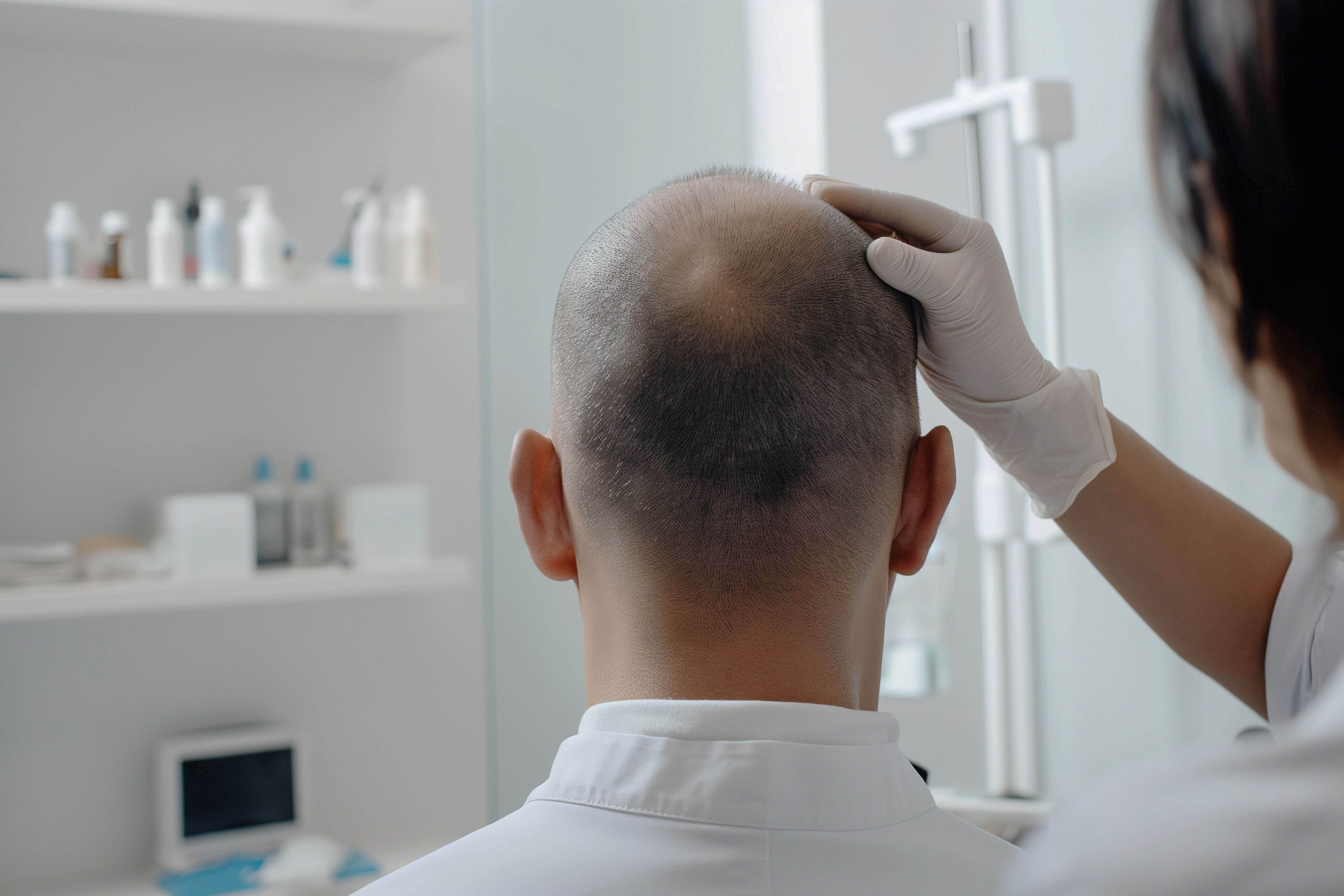News
Article
Review: Approving, Using JAK Inhibitors for Better Alopecia Areata Outcomes
Author(s):
Key Takeaways
- JAK inhibitors like baricitinib, ritlecitinib, and brepocitinib show promise in treating alopecia areata, with baricitinib approved by FDA and EMA.
- Baricitinib significantly reduced SALT scores at 24 weeks, demonstrating superior efficacy over placebo in clinical trials.
New and in-the-pipeline Janus kinase (JAK) inhibitors have the potential to make huge differences in the lives of patients with this psychologically distressing autoimmune disease.
Hair regrowth will occur more quickly and successfully in patients with moderate to severe alopecia areata as Janus kinase (JAK) inhibitors become more frequently used, according a comprehensive literature review published in Italian Journal of Dermatology and Venerology.1 The team’s thorough search identified 12 clinical studies of baricitinib (Olumiant), brepocitinib, and ritlecitinib (litfulo), all from 2015 or later, that focused on treating alopecia areata of the scalp, beard, eyebrow, and eyelash.
Man with alopecia undergoing an examination | image credit: alsu0112 - stock.adobe.com

Specifically, the team used the literature results to assess baricitinib’s efficacy and safety, and to compare the effectiveness of 2 newer agents: ritlecitinib and brepocitinib. All began to work quite quickly and were well tolerated, with adverse events (AEs) reported as mostly mild and manageable.
Baricitinib, an inhibitor of JAK1/2, was approved by both the FDA and European Medicines Agency in 2022 to treat moderate to severe alopecia areata. The JAK3/TYK2 inhibitor ritlecitinib received FDA approval for this indication in 2023; brepocitinib, a TYK2/JAK1 inhibitor, has not yet been approved for alopecia.
Alopecia areata is significantly challenging for patients and clinicians not only because of its chronic autoimmune nature, but because of its psychosocial impacts. For most children, adolescents, and adults—individuals of any age can be affected—hair loss is psychologically very stressful. The condition isn’t rare, relatively speaking, with a world prevalence of 2%.
SALT Crystallizes Outcomes
SALT—or Severity of Alopecia Tool—score changes were among the primary outcomes in the 12 studies (8 randomized controlled trials [RCTs]; 4 observational), and safety data included AEs and serious AEs. The studies included 2010 patients in total: patients 18 years and older in baricitinib trials; those 12 years and older in ritlecitinib and brepocitinib trials; and adolescents aged 12-17 years treated with baricitinib in a Journal of the American Academy of Dermatology retrospective study.2
Baricitinib demonstrated superior efficacy over placebo at 24 weeks, the authors reported. Both 2 mg and 4 mg dosages significantly reduced SALT scores (the lower the SALT score, the better the hair regrowth). Further, also at 24 weeks, baricitinib, brepocitinib, and ritlecitinib had similar effectiveness vs placebo, with a marginal superiority observed for baricitinib 4 mg.
Do You Know JAK?
Over the years, alopecia areata has come to be understood as a complicated, polygenic, autoimmune disease resulting from the interaction of genetic, immunological, and environmental factors. Genetic research identified signaling pathways crucial for the growth and cycling of hair follicles, which implicated the role of genes in T-cell pathways and autoimmunity, wrote the authors. Since JAK inhibitors can suppress JAK-STAT pathways, blocking the downstream signaling of different cytokines andd ecreasing perifollicular T-cell infiltration, it was logical to experiment with JAK inhibitor use in alopecia areata.3
The authors wanted their article to raise awareness of JAK inhibitor use, effectiveness, and safety as potential alopecia areata therapy options, to help “pav[e] the way” for more official treatment guidelines to increase their use, they explained.
The team is especially conscious of the need to research and address children’s circumstances. Baricitinib has received approval solely for adult usage, but children with alopecia areata need their own efficacious treatments—perhaps with lower oral doses of baricitinib, such as 1 or 2 mg, or with topical applications, suggested the authors. Ritlecitinib’s and brepocitinib’s safety and efficacy at lower doses in patients 11 years and younger need to be explored in trials, too, they noted.
In fact, for patients of all ages and with various alopecia areata subtypes, high-quality comparisonRCTs, with larger sample sizes and longer follow-up durations,“are crucial to draw more substantial conclusionsregarding long-term efficacy and safety…andto identify optimal therapeutic doses,” wrote the authors.
References
1. Bushwereb R , Srivastava G. Exploring Janus kinase inhibitors for alopecia areata: a comprehensive review. Ital J Dermatol Venerol. 2024;159(4):380-389. doi:10.23736/S2784-8671.24.07894-0
2. Moussa A, Eisman S, Kazmi A,et al. Treatment of moderate-to-severe alopecia areata in adolescents with baricitinib: a retrospective review of 29 patients. J Am Acad Dermatol. 2023;88(5):1194-1196. doi:10.1016/j.jaad.2022.12.033





